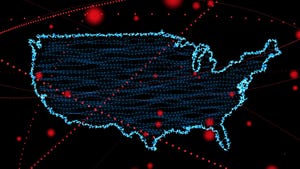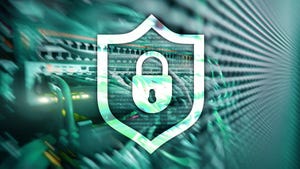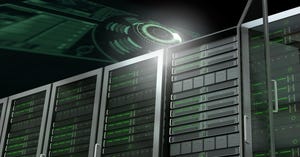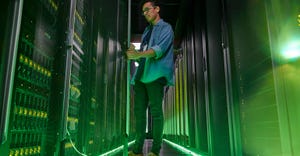
Insight and analysis on the data center space from industry thought leaders.
Software Defined Power in Virtualized Application Environments
Software Defined Power requires creating a layer of abstraction that isolates the application from local power dependencies and maximizes application uptime, by leveraging existing failover, virtualization and load-balancing capabilities, writes Clemens Pfeiffer of Power Assure.
April 2, 2014
Clemens Pfeiffer is the CTO of Power Assure and is a 25-year veteran of the software industry, where he has held leadership roles in process modeling and automation, software architecture and database design, and data center management and optimization technologies.
Server virtualization has many benefits in terms of reliability, manageability, scalability and efficiency. This prompted most organizations to virtualize their applications. While the virtualization trend was still ongoing, organizations quickly learned that the abstraction of hardware through virtualization allows for much more flexibility when performing routine maintenance tasks like hardware upgrades and reconfigurations for applications that are now expected to run 24x7x365.
Virtualization also allowed for applications to be migrated from one set of hardware to another without any down time and it allowed operators to add (and remove) capacity dynamically, making it easy to adjust capacity based on ever changing demand. As a result, application outages based on IT hardware failures dropped significantly.
Complete Data Center Failures
However, people responsible for application service levels and guarantees are still nervous about the prospect of a complete data center failure. Therefore almost all mission critical application environments require some sort of backup/business continuity location. Such a location is usually geographically dispersed, setup as a fully redundant data center, configured for either hot or cold backup and failover. As a result, the virtualization was extended to network and storage components to allow dynamic configuration changes of all IT components required by an application.
VMware calls this the Software Defined Data Center (SDDC), considered by many to be the final step in the evolution of this virtualization trend where compute, storage and network resources are all virtualized, abstracted away and are delivered as a service that any application can use. However, it is primarily an abstraction within a single data center, so automated failover and recovery is still required and unfortunately is very often plagued by problems.
Additionally, as it is validated by the latest application outage statistics, one of the most common causes of application outages is now related to power, either to internal data center power delivery issues or problems from the power utility grid. While everyone believes that a 2N or even 2N+2 Tier 4 data center has enough redundancy to not experience any power related outages, any mistake, operator error, failure in the power distribution that only interrupts power to IT equipment for a second, can lead to long application recovery times. So while technically 5min of downtime of the data center (assuming 99.999% availability) might never be exceeded, this might not be true for the applications itself.
What is Software Defined Power?
This is where the need for Software Defined Power (SDP) comes from. It requires creating a layer of abstraction that isolates the application from local power dependencies and maximizes application uptime by leveraging existing failover, virtualization and load-balancing capabilities to shift application capacity across data centers in ways that always utilize the power with the highest availability, dependability and quality.
SDP is implemented as an extension to existing virtualization and software-defined environments. It will collect real-time power and IT usage data to understand demand and capacity and the variability of each. Creating automated run-books for each application to adjust capacity either up or down will allow data center operators to achieve the maximum energy and cost savings from running the correct capacity needed for the applications to support the ongoing demand.
Shutting down idle/backup servers and freeing them up as a pool of spare resources will allow them to be shared by any application. As primary and backup applications are virtualized, the hardware allocation for the primary application can be adjusted based on real time demand, while the hardware allocation for the backup site can be minimal to support system management agents and automated patch management. This usually leaves between 40-50% of hardware available for dynamic allocation, assuming a primary and fully populated backup site configuration. Obviously any runbook would leverage DRS and other VMware or hypervisor specific functionality to optimize hardware use and minimize power/operating cost. Last but not least, current customer implementations show that such adjustments, even when done across data centers can be completed in less than 5 minutes, fully automated.
Software Defined Power integrates with all common virtualized environments and leverages its capabilities to distribute application load on the basis of application QoS requirements, power cost and availability.
Software Defined Power is an emerging solution to adjust hardware capacity, migrate applications and maintain pools of spare capacities to be allocated dynamically to applications as demand changes. It enhances investments in IT, facilities and application monitoring, DCIM, virtualization and system management by making it possible to avoid power related issues by proactively moving applications to other environments/locations as a matter of routine, achieving the ultimate application reliability.
Industry Perspectives is a content channel at Data Center Knowledge highlighting thought leadership in the data center arena. See our guidelines and submission process for information on participating. View previously published Industry Perspectives in our Knowledge Library.
About the Author
You May Also Like


.jpg?width=300&auto=webp&quality=80&disable=upscale)



.jpg?width=300&auto=webp&quality=80&disable=upscale)


